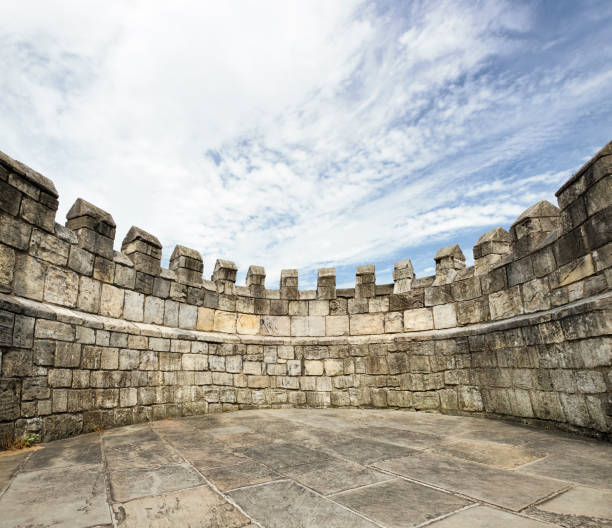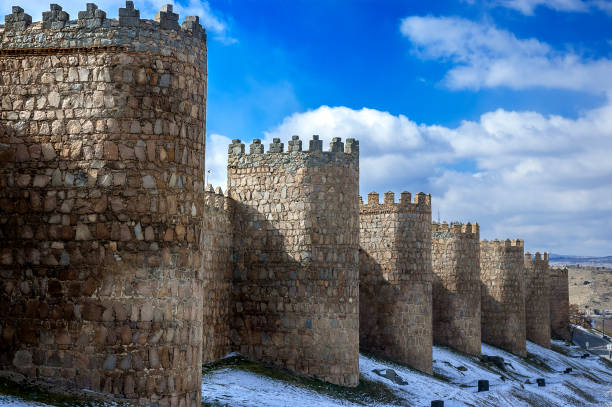A Parapet Wall is more than just a decorative edge on a roof or balcony, it is a critical structural feature that improves safety, enhances design, and protects your building from wind and water damage. In modern construction, this wall are commonly used on flat roofs, commercial buildings, and residential structures to improve durability and curb appeal.
In this guide, you’ll learn everything you need to know about parapet wall construction, roof parapet design types, benefits, materials, and maintenance tips
What Is a Parapet Wall?
A Parapet Wall is a low protective wall that extends above a roofline, terrace, or balcony. It acts as a barrier to prevent falls while also enhancing the architecture of a building.
Parapet walls are commonly found in:
- Historic properties
- Commercial buildings
- Flat-roof homes
- Apartment complexes
- Industrial structures
There are several types of parapet walls depending on their purpose and design needs, each offering unique benefits.
Roof Parapet Walls
A roof parapet wall is specifically built at the edge of flat or low-sloped roofs. It prevents accidents, supports drainage, and often enhances the building’s look.
Why Are Parapet Walls Important?
Parapet walls serve multiple roles in both residential and commercial buildings.
- Safety – Prevents people from accidentally falling off the roof.
- Wind Protection – Reduces wind pressure on the roof edge.
- Aesthetic Appeal – Adds style and character to buildings.
- Fire Safety – Blocks fire from spreading between roofs in urban settings.
- Support for Utilities – Can hide HVAC units, solar panels, or drainage pipes.
Types of Parapet
Parapet walls come in several types, each designed with a specific function and aesthetic in mind. They play an important role in both protecting the structure and enhancing the overall architectural appeal of a building.
1. Plain Parapet
A simple vertical wall built for basic safety along the roof edge. Common in industrial and modern minimalist buildings due to its clean and functional design.
2. Embattled Parapet Wall
Known for its raised and lowered sections, this type adds a traditional, historic look. Often used in heritage-style architecture or institutional buildings.
3. Perforated Parapet Wall
Designed with openings or patterns that allow airflow and reduce wind pressure. Ideal for modern commercial buildings, rooftop spaces, and designs that require ventilation.
4. Panelled or Ornamental Parapet Wall
Features decorative panels for a sleek, stylish appearance. A popular choice in contemporary homes and commercial properties.
5. Curved or Stepped Parapet Wall
Offers an elegant curved or tiered shape that enhances the building’s silhouette. Used in luxury homes and custom architectural designs for added visual appeal.


Roof Parapet Design Considerations
Designing a roof parapet involves balancing form and function. The following points are crucial during planning:
- Height of the Parapet
The height typically ranges between 2.5 to 3 feet, depending on building type and safety requirements. In high-rise or public structures, higher parapets may be necessary. - Waterproofing
One of the most important design factors. The top surface of the parapet (called the coping) must be sloped to drain water away. Waterproof membranes or coatings prevent seepage. - Drainage System
Scuppers or drainage outlets should be strategically installed to allow water flow without pooling at the base of the parapet. - Thermal Expansion Joints
Large parapet sections need expansion joints to accommodate temperature changes and prevent cracking. - Aesthetic Integration
The parapet should complement the building’s façade and roofline. Designers often use moldings, panels, or color variations for visual balance.
Choosing the Right Design
The right design depends on:
- The overall architecture of the home.
- The climate (sloped designs work better in heavy rain areas).
- Safety requirements (higher walls for rooftop access).
Materials Used in Parapet Walls Construction
The choice of material determines durability and style.
| Material | Benefits | Challenges |
|---|---|---|
| Brick | Strong, traditional | May need repair over time |
| Concrete | Durable, versatile | Can crack if not maintained |
| Stone | Classic, attractive | Expensive |
| Steel/Metal | Modern, sleek | Needs rust protection |
| Glass | Stylish, contemporary | Needs regular cleaning |
Each material supports different roof parapet designs. For example, brick fits well with traditional homes, while glass works in modern city buildings.
Step-by-Step Guide to Parapet Construction
Building a parapet wall requires careful planning and proper materials.
1. Structural Planning and Assessment
Engineers determine height, wall thickness, reinforcement levels, and expected wind loads.
Local building codes typically require parapet walls to be 30–42 inches in height.
2. Material Selection
Common materials for parapet wall construction include:
- Concrete
- Concrete masonry units (CMU)
- Brick masonry
- Metal-framed systems with exterior cladding
Each material offers different levels of durability, thermal performance, and cost efficiency.
3. Reinforcement Installation
Steel reinforcement bars are added to ensure the parapet wall integrates securely with the main structural wall.
This prevents separation, cracking, or collapse during strong winds or seismic activity.
4. Masonry or Concrete Construction
The wall is built layer by layer with proper alignment and leveling.
Mortar joints, vertical reinforcement, and bonding elements must be placed accurately to ensure structural integrity.
5. Waterproofing and Flashing
This phase is critical because parapet walls are highly exposed to weather.
Essential components include:
- Base flashing
- Counter flashing
- Cap flashing
- Waterproof membranes
- High-quality sealants
Proper waterproofing prevents moisture penetration, mold growth, and roof leaks.
6. Coping Installation
Coping protects the top of the parapet wall from rainwater.
Common materials include:
- Stone coping
- Precast concrete
- Metal coping (aluminum, galvanized steel, or stainless steel)
Metal coping with a continuous cleat is preferred for long-term durability.
7. Final Finishing and Inspection
After construction, contractors inspect for:
- Waterproofing accuracy
- Alignment and height consistency
- Drainage pathways
- Membrane attachment
- Surface finishing
A final protective coating or paint may be applied depending on the material.
Maintenance Tips for Parapet Walls
- Inspect parapets annually for cracks or water damage.
- Apply waterproof coatings every 5–7 years.
- Replace damaged bricks or stones promptly.
- Clear drainage outlets regularly.
- Use professional roof maintenance services for large buildings.
Parapet Wall vs. Guardrail – What’s the Difference?
| Feature | Parapet Wall | Guardrail |
|---|---|---|
| Structure | Solid wall made of brick, concrete, etc. | Metal or wooden railing system |
| Height | 3–4 feet | Usually 3 feet |
| Durability | High | Medium |
| Aesthetic Appeal | Blends with building design | Simple, functional |
| Cost | Higher | Lower |
Final Thoughts
Parapet walls may seem like a simple structural element, but they play a critical role in safety, design, and weather protection. A well-constructed parapet not only keeps your structure safe from wind, water, and fire but also improves the building’s appearance and longevity. When planning parapet wall construction and roof parapet design, always prioritize proper waterproofing, durable materials, and professional craftsmanship.
If you’re considering upgrading or building a new parapet wall, consult experienced masonry and roofing specialists who understand local building codes and weather conditions. Investing in the right design today ensures your structure remains strong and stylish for decades.
Have Questions? Call Us Now!
We’re here to help—quick answers, friendly service, anytime you need!
